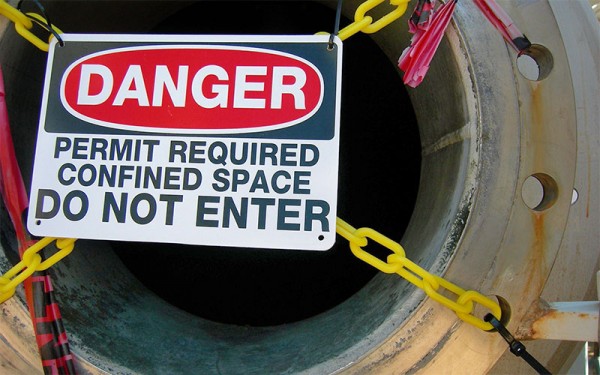Permit to Work is a management system designed to provide protection for employees who are working in hazardous situations. It ensures that work is done safely and efficiently. The permit to work process involves procedures to request, review, authorize, document and deconflict tasks. This ensures that two operations that may cause a potential hazard do not take place in close vicinity.”
Work permits should be required for any type of hazardous work, but the most common types of work permits are hot work permits, confined space permits, ground disturbance permits, electrical permits, and cold work permits. The specific laws and regulations will be governed from state to state so make sure to check the specifics for your state, but here are some general guidelines.
Hot work permits are usually required when working with any type of welding equipment, flame cutting or grinding equipment.
Cold Work permits are for work that may not necessarily create a flammable environment but could nonetheless cause injury. This is kind of an all-purpose work permit for any type of work that is hazardous.
Electrical permits are usually required any time installation or alteration is being performed on permanent wiring or electrical devices.
Confined Space permits are one that OSHA has specific requirements for. OSHA describes a permit-required confined space as a space that has one or more of the following characteristics:
- Contains or has the potential to contain a hazardous atmosphere;
- Contains material that has the potential to engulf an entrant;
- Has walls that converge inward or floors that slope downward and taper into a smaller area which could trap or asphyxiate an entrant; or
- Contains any other recognized safety or health hazard, such as unguarded machinery, exposed live wires, or heat stress.
Ground disturbance permits are needed any time you are digging. Again, check with your local authorities for specific regulations and laws, but typically digging 16 inches or deeper will require a permit.
JJ Safety has a permit to work policy that requires a safe work permit be issued for all work defined as “high-risk” and/or “non-routine”. Only people who are trained and authorized should issue permits to work. The procedure of issuing a permit to work usually involves an assessment of the job and contains the following:
- The location of the worksite
- Site Supervisor or person responsible
- The work to be completed
- The equipment to be used
- The Personnel
- Other people in the area to be informed
- Authorization for work commencement
- Duration the permit is valid for
- Method to extend the permit
- Actions in case of emergency
- Procedure to confirm that all work has been completed the worksite has been restored to a safe condition.
Normally work can commence after the work permit has been submitted, reviewed and approved by an authorized person. If you need a written permit to work program, JJ Safety can help. Give us a call or shoot us an email with any questions about safety or ISNetworld®.
We can be reached at 866-627-3850 or by email at sales@jjsafetyllc.com to learn more.
